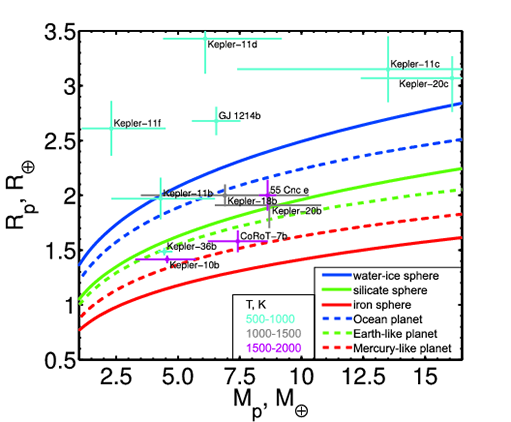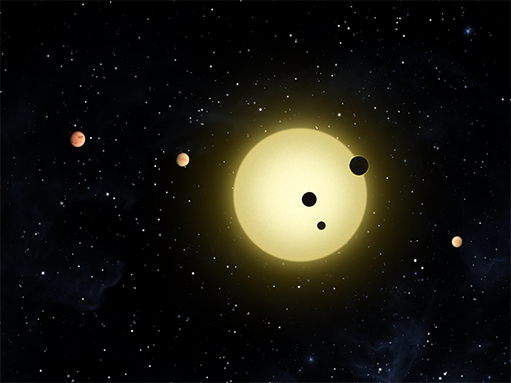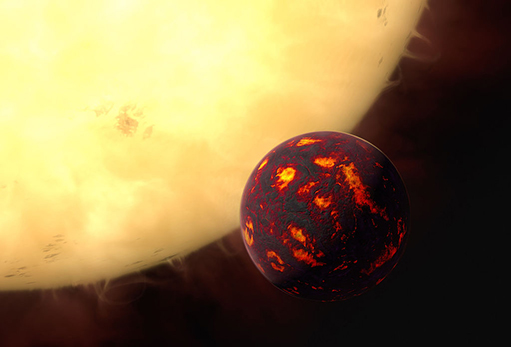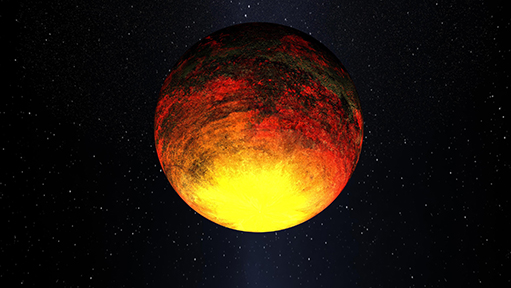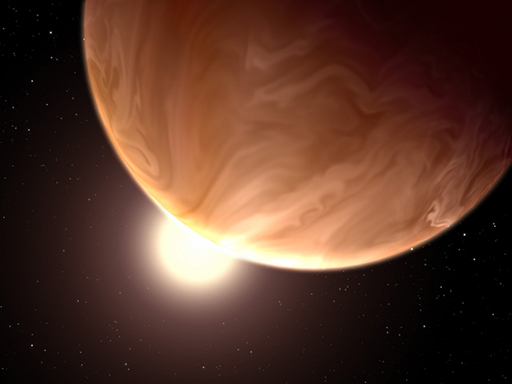7 Density is key
In Week 3 you learned about measuring planet masses by measuring the amount by which the star wobbles – this is called the radial velocity method. More recently, you learned how to measure the radius of a planet using the transit method. In Section 4 this week you applied both these methods.
Transiting planets for which you also have radial velocity measurements are extremely important. Because you know the masses and radii of these planets, you can calculate their densities. Remember, the volume of a spherical planet is equal to 4.19r3, and the density is equal to the mass divided by the volume.
You learned about planet densities in Week 2. The densities of rocky worlds like Earth and Venus are higher than the densities of gas giant planets like Jupiter and Saturn. Density, therefore, gives you a clue about planet composition.
The Kepler spacecraft and other programmes have found several small planets that could possibly be rocky, and therefore Earth-like. Exoplanets have given astronomers lots of surprises though. Just because all the small planets in the Solar System are rocky doesn’t mean all small exoplanets are rocky. Looking at the results of density calculations for small exoplanets, you can sort out the ones likely to be rocky. For the others, where the density is different from the density of rock, you can make an educated guess at what the composition might be.
Figure 8 shows the masses (on the horizontal axis, in units of Earth mass) and radii (on the vertical axis, in units of Earth radius) of some small exoplanets. The differently coloured lines on the diagram show the masses and radii planets would be expected to have for different compositions. Going from the top to the bottom, the planets get denser, going from worlds likely to be made of water and ices, to rocky ‘silicate’ worlds, to worlds made of solid iron. Silicate materials are the main constituent of rocks on Earth.
Note that water is unusual in that liquid water is more dense than water-ice (in the majority of cases, solids are more dense than liquids).
Activity 7 Rocky or not?
Based on their position on the diagram above (Figure 8), can you decide which of these planets might be rocky? (The crosshairs for each planet indicate the uncertainty in the measured mass and radius).
Kepler-11 c
Answer
No, it’s density is less than that of a sphere composed purely of water-ice. This is shown by the fact that it’s above the solid dark blue line in the diagram.

